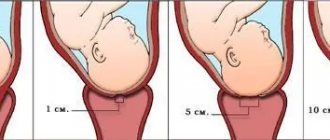- Causes
- Symptoms
- Types of uterine tumor
- Malignant
- Benign
- Stages of uterine cancer
- Treatment
- Diagnostics
- Therapy
- Operation
- Further development of the situation and forecast
A uterine tumor is a neoplasm that can be benign or malignant. A tumor is an overgrown tissue and localized in one or several places. Uncontrolled cell division in a tumor occurs under the influence of a number of factors.
Causes
A tumor of the uterus can occur for reasons such as hormonal imbalance, infections and inflammatory diseases of the pelvic organs, various injuries, and surgical interventions. The development of some types of neoplasms is influenced by hereditary predisposition.
The cause of tumors of the uterus and appendages is often a combination of unfavorable factors affecting the body: frequent stress, general fatigue and weakness, and chronic inflammatory processes in nearby organs (for example, the intestines) play a negative role.
The causes of cervical tumor formation are inflammatory diseases of the vagina, dysbacteriosis, dysbiosis. In many cases, disorders can occur when the synthesis of sex hormones changes. Cervical tumors caused by such causes as the presence of certain types of human papillomavirus in the body have an oncogenic risk.
To prevent the appearance of tumors, regular visits to the gynecologist are recommended. If there are no problems, you should see a doctor once every six months.
Diet
One of the significant risk factors for developing uterine cancer is obesity. Rational nutrition is an integral part of treating the disease. Principles of diet for neoplasms of the reproductive sphere:
- increase the consumption of iron-containing foods: rose hips, beef liver, red pepper, seafood. Due to the development of anemia, restoration of the element's reserves is required;
- preparing meals from foods with antiestrogenic properties to reduce symptoms. These include monounsaturated fats found in nuts, olive oil, flaxseed oil, pumpkin seeds and sesame seeds;
- use flavonoids that reduce the carcinogenic effect on the body. Low-fat dairy products, fish, green tea, and garlic contain large amounts of the substance;
- increase fiber intake: whole grain cereals, buckwheat, oatmeal, brown rice, legumes, wholemeal flour, green fruits and vegetables;
- ensure the supply of antioxidants from citrus fruits, spinach, berries, green vegetables and fruits;
- exclude fatty meat, mayonnaise, sausages, butter, beer from the diet.
Symptoms
In women during menopause, the first symptoms that may indicate a tumor of the uterus may be:
- Lost menstrual cycle. Just before menopause, bloody discharge becomes less frequent and decreases in volume. But with a tumor, the discharge may become more frequent and abundant again.
In women after menopause, when there has been no menstruation for more than 2 months, symptoms may include:
- Any discharge with blood or bleeding.
In women of all ages, the following symptoms may indicate the presence of a uterine tumor:
- irregular bleeding;
- constipation;
- fast fatiguability.
The following types of pain may cause concern:
- in the lumbar region;
- lower abdomen;
- in the perineum;
- when urinating;
- after sexual intercourse.
Diagnostics
If a woman notices the above symptoms of uterine edema, she should immediately consult a gynecologist. The doctor will conduct a gynecological examination and confirm the enlargement of the organ. To determine the causes of endometrial swelling, the following studies are prescribed:
- Ultrasound of the pelvic organs;
- blood test to detect STIs;
- smear from the cervical canal for cytological examination;
- hysteroscopy;
- CT or MRI.
A woman with significant swelling of the uterus during the diagnostic period can be prescribed accumulative diuretics, for example, Hypothiazide or Veroshpiron.
It is also recommended to follow a salt-free diet and limit fluid intake. Share:
Types of uterine tumor
Tumors can be benign or malignant. Benign tumors can develop for years without causing discomfort or danger to life. They are easy to treat. Malignant tumors (cancer) grow rapidly and can pose a serious threat to life. Treatment of such tumors is more successful the earlier they are diagnosed.
Malignant tumors
The classification of cancer depends on the location of the tumor in the uterus and the type of cancer cells:
- Squamous cell carcinoma
is a tumor that develops from the epithelium of the cervical canal and the vaginal part of the cervix. The most common uterine cancer. Most often they get sick at the age of 30-34 years. The cause of this type of tumor is a virus. Its appearance is promoted by: smoking, early onset of sexual activity, frequent change of sexual partners, immunodeficiency states. Squamous cell carcinoma may be preceded by the following precancerous conditions: CIN I or moderate dysplasia; - CIN II or severe dysplasia;
- CIN III or carcinoma.
is the formation of foci with squamous differentiation, closely intertwined with glandular structures. Outwardly it resembles an ulceration formation. Rarely seen. It has low differentiation (cells are very different from normal), which is why it often takes an aggressive course.
is a tumor affecting the glandular cells of the uterine cavity and cervical canal. Often found in older women.
is a tumor that is degenerated cells of epithelial tissue. It has a hidden course and is often detected during a routine gynecological examination.
- a common type of cancer that develops from the secretory epithelium of the mucous membrane of the uterine body and grows either into the uterine cavity (exophytic form) or deep into the lumen of the organ (endophytic form). Happens:
- highly differentiated;
Benign tumors
The most common benign tumors of the uterus are:
- A cyst
is a bubble filled with liquid contents. The bubble itself is not dangerous and is rarely large, but it can cause complications in the form of pseudo-erosion on the mucous wall of the uterus or suppuration if it ruptures. To avoid complications, it is better to remove the cyst. - Myoma
is a ball of intertwined smooth muscle fibers of a round shape, with a diameter of several millimeters to several centimeters. It is more common during the late reproductive period and before menopause. It is the most common tumor in women. It is a hormone-dependent tumor. Occurs due to improper division of one smooth muscle cell. It is treated with medications such as tranexamic acid and gonadotropin releasing hormone antagonists. The most effective is surgical removal using laparoscopy, hysteroscopy and hysterectomy. - A polyp
is a tumor that is a growth from the basal layer of endometrioid cells. It is a tumor body on a stalk, with the help of which it is attached to the inner wall of the uterus. Occurs against a background of weak immunity and metabolic disorders. Most often occurs after the age of 30. Endometrial polyps are removed during hysteroscopy, and their base is scraped off with a curette. The procedure is carried out quickly under local anesthesia; after the operation, there may be bloody discharge from the uterine cavity for 10 days. Adenomatous polyps are a precancerous condition, so their treatment differs from the treatment of ordinary polyps. Women over 45 years of age with adenomatous polyps are prescribed complete removal of the uterus. - Fibroma
is a tumor that grows from the muscular layer of the uterus, which is dominated by connective elements. It is a hormone-dependent tumor. It grows from one mutated cell. It can be nodular or diffuse. Nodular fibroids are clearly defined and distinguishable from other formations, while the boundaries of diffuse fibroids are blurred and can merge with other formations.
Stages of uterine cancer
- Stage 0
– a malignant change in the uterine epithelium without penetration of the basement membrane. - Stage 1
– the tumor is located within the body of the uterus. - Stage 2
– the tumor spreads to the cervix. - Stage 3
– the tumor metastasizes to the ovary, vagina, pelvic or para-aortic lymph nodes. - Stage 4
– the tumor spreads to the mucous membrane of the large intestine, bladder, distant organs and lymph nodes.
Treatment
Treatment of uterine cancer consists of accurate diagnosis of this disease, correct determination of the type of tumor and, based on diagnostic data, the choice of treatment method - therapy and surgery.
Diagnostics
To identify the disease and determine the type of tumor, the following methods can be chosen:
- Clinical diagnosis
- patient interview, gynecological examination and medical history. - Ultrasound examination of the pelvic organs (ultrasound)
is a research method using an ultrasound machine that allows you to identify a tumor, study its size and structure, check the condition of the outer, mucous and muscular layer of the uterus, assess the state of blood flow and detect lesions in other organs. - Hysteroscopy
is a visual examination of the uterus and collection of biological material from the inner layer in places where a tumor is suspected. - The cytological method
is the study of the cellular composition of the material obtained as a result of smears during a gynecological examination. Based on the cellular composition, one can determine the presence of an inflammatory process, atypical and cancer cells in the uterus. - Biopsy and immunohistochemistry
- examination of uterine material taken using a colposcope, under a microscope and using immunohistochemistry to determine the type of tumor cells. - Histological examination
- examination of material taken from the uterus under a microscope. The structure of the tissue, the presence of tumor cells and their differentiation are studied. - Tumor marker CA-125
is a blood test for the presence of markers that indirectly indicate the spread of the tumor process in the body. - Fluorescent diagnostics
is a method in which photosensitizing substances that can selectively accumulate in malignant cells are introduced into the body. Then, using an endoscopic examination of the uterus, the location of the tumors is identified. The method allows tumors of less than 1 millimeter.
After receiving data collected by various methods, the doctor deciphers the results, evaluates everything in its entirety, makes a diagnosis and prescribes treatment.
Therapy
For certain types of tumors, treatment may be effective:
- Hormone therapy
is the use of hormones, such as progesterone and others, to suppress certain types of tumors in the early stages. It is most often used to treat women who are planning to become pregnant in the future. Weight gain and other side effects may occur after hormone therapy. - Chemotherapy
is the use of chemicals that destroy certain types of tumors. Typically used after surgery to destroy remaining cancer cells in the body. Therapy is carried out in intravenous cycles. As side effects, it can cause hair loss, disturbances in the gastrointestinal tract, and decreased immunity. - Radiation therapy
is used to destroy cancer cells, either alone or in combination with other types of therapy and surgery. Irradiation of the tumor can be external or internal. External radiation is done using a large machine that directs rays from the outside to the site of the tumor in the uterus. Internal irradiation is carried out by inserting a cylinder containing radioactive material into the vagina for a short time. Radiation therapy may temporarily cause menstrual irregularities, vaginal tightness, burning, dryness, and irritation.
The use of therapy depends on the type of tumor, stage of development, general health of the patient, his age and many other factors.
Operation
The main method of treating the disease by removing the tumor:
- Conventional abdominal surgery (laparotomy)
. To access the tumor and remove it, a large incision is made in the abdomen. - Endoscopic surgery
. The tumor is removed using an endoscopic device, which is inserted through several small incisions in the anterior abdominal wall.
The surgical method is chosen by the surgeon depending on the patient’s condition.
You can make an appointment for diagnosis and treatment of a uterine tumor at our L-Med clinic by calling +7
or through the online form on the website.
Prevention
Methods of cancer prevention come down to reducing endocrine disorders and combating risk factors. Patients are recommended:
- lead a healthy lifestyle;
- monitor body weight, sugar levels, blood pressure;
- perform physical exercises;
- quit smoking;
- normalize hormonal disorders;
- treat infections promptly;
- minimize the damaging effects on the organ.
The use of oral contraceptives reduces the risk of developing uterine tumors.
Despite many myths, uterine tumors can be successfully treated. When the first adverse symptoms appear, you should seek help. Timely initiation of therapy leads to increased survival and quality of life for the patient.
Further development of the situation and forecast
The prognosis for recovery depends on many factors, such as the patient’s age, type of tumor, stage of cancer, presence of metastasis, and others. Patients under 50 years of age have a more favorable prognosis with a hormone-dependent type of cancer and the absence of metastases. The prognosis is worse for women over 70 years of age with a type of cancer that is insensitive to hormones. Detecting and treating cancer at an earlier stage provides a better prognosis. Treatment of endometrial cancer gives better results than sarcoma. Removing a small, localized tumor provides a more favorable prognosis than a large tumor that has spread to other organs.
All patients who have been diagnosed with uterine cancer and who have undergone treatment are under the supervision of a gynecological oncologist.
Women who have received treatment for uterine cancer with preservation of the organ may become pregnant after hormonal rehabilitation and restoration of ovulatory cycles. In these individuals, pregnancy management requires special attention. Patients who have undergone complete amputation of the uterus may develop posthysterectomy syndrome. All articles "
Definition
A tumor is a proliferation of cells with an altered structure. As a result, normal functioning and tissue integrity are disrupted. The uterus consists of three layers, each of which can become a source of tumor. The peculiarity of oncological pathology is the absence of symptoms in the initial stages. The appearance of complaints usually occurs when the cancer reaches a certain size and compresses neighboring structures. Treatment and survival prognosis for uterine tumors depend on the stage at which the disease is detected.











